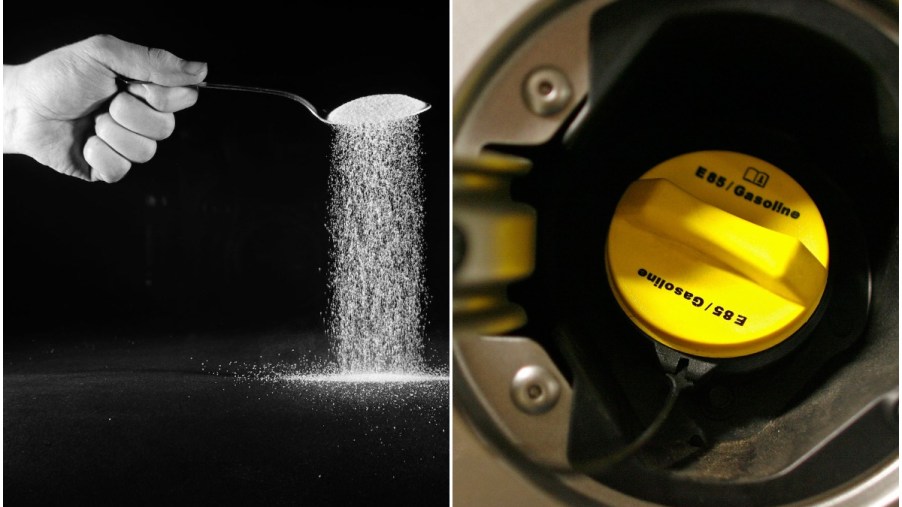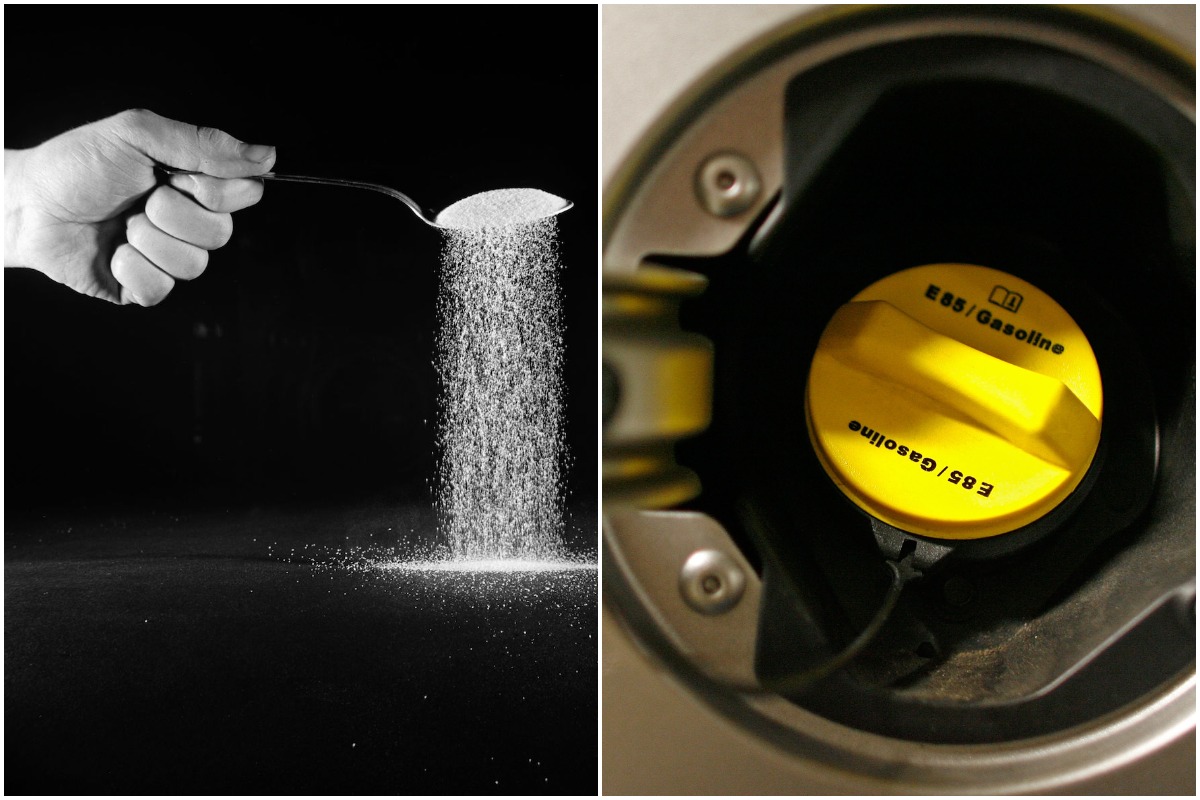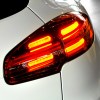
Sugar Will Clog, Not Kill, Your Car’s Engine
Car safety facts and lies abound. For instance, one car myth is that sugar in the gas tank will kill the engine. Many people believe sugar turns into syrup and gums up the car’s engine, resulting in costly maintenance and repairs. Let’s see why this myth is untrue and what happens when sugar mixes with gasoline.
The myth explained

The myth says that putting sugar in a vehicle’s gas tank will kill the engine or blow it up. Though it sounds terrible, it’s untrue, Popular Mechanics explains. First, understand that sugar doesn’t dissolve in gasoline as it does in water. Sugar remains in its granular form in gas.
Next, your fuel system comprises several filters along the way to the engine. Most or all of the sugar would get caught in the fuel tank filter. If some sugar were to get past that, it would have to flow through filters located at the tank pump inlet, fuel pump, and fuel injectors.
If you own a vehicle with a carburetor, not fuel injectors, it still won’t cause significant harm because there are other filters in the system. The sugar granules are about 200 microns in size and are easily caught by these filters, which pick up significantly smaller particles.
Mohammed Fatouraie, an engineer at Bosch, which makes fuel system parts, says the sugar is much denser than gasoline. That means a good deal of the sugar would settle into pockets in the tank instead of flowing through the fuel lines and causing issues that need expensive repairs.
So, should you leave sugar in your gas tank?
Though sugar in your gas tank likely won’t destroy your engine, it can cause some damage to the fuel system’s parts. So it’s best not to run the vehicle with sugar in the tank. The biggest problem would be your fuel pump overheating, which could cause your engine to follow suit. Also, it could burn out the pump.
That would happen if enough sugar clogged the fuel filters in the line leading to the pump, limiting the amount of fuel getting through. Starving the fuel pump of gas would ultimately burn out the pump, making replacement necessary, HotCars explains.
If you suspect someone has poured sugar into your gas tank, take your car (by tow truck if possible) to a repair shop to get your fuel system cleaned out unless you’re mechanically handy. The process involves dropping the tank, cleaning it, and replacing the affected fuel filters, likely costing you quite a bit at an auto repair shop.
How do you know if your car has sugar in its gas tank?
If an angry neighbor or co-worker pours sugar into your gas tank without your suspecting it, how will you know it happened before it causes damage to your car’s fuel system? Some symptoms can alert you to something nasty going on with your vehicle.
One way to tell is whether you notice power surges when the vehicle accelerates. Sugar clogged in a filter will limit fuel flowing through the intake system, which will begin to starve your engine, making the surges happen intermittently.
Another warning sign is if your engine stalls as you’re driving. In some cases, the vehicle might not even start when not enough fuel is getting to the engine or if sugar granules clog the filters. Also, you might find sugar granules gathered in the area around the fuel tank inlet when you go to pump gas.
Those warnings are enough to alert you that something is wrong, and you should get your vehicle to a mechanic as soon as possible for maintenance. Trained technicians will do troubleshooting and come across the sugar granules at some point.
Sugar in your gas tank can cause some damage to your vehicle, but it won’t blow your engine up or cause a major casualty. Still, get it cleaned out ASAP to prevent some of your fuel system components from getting ruined.


